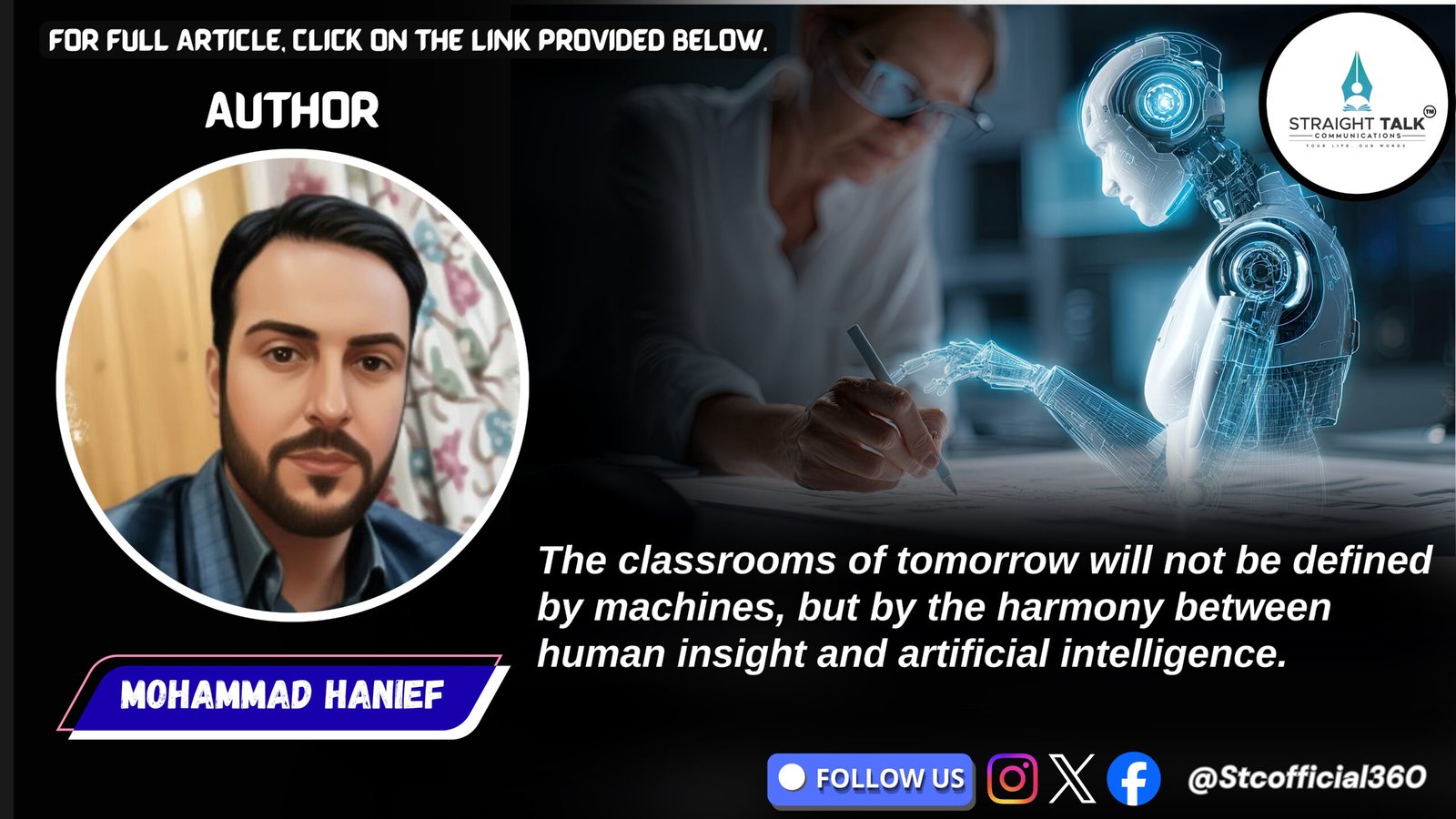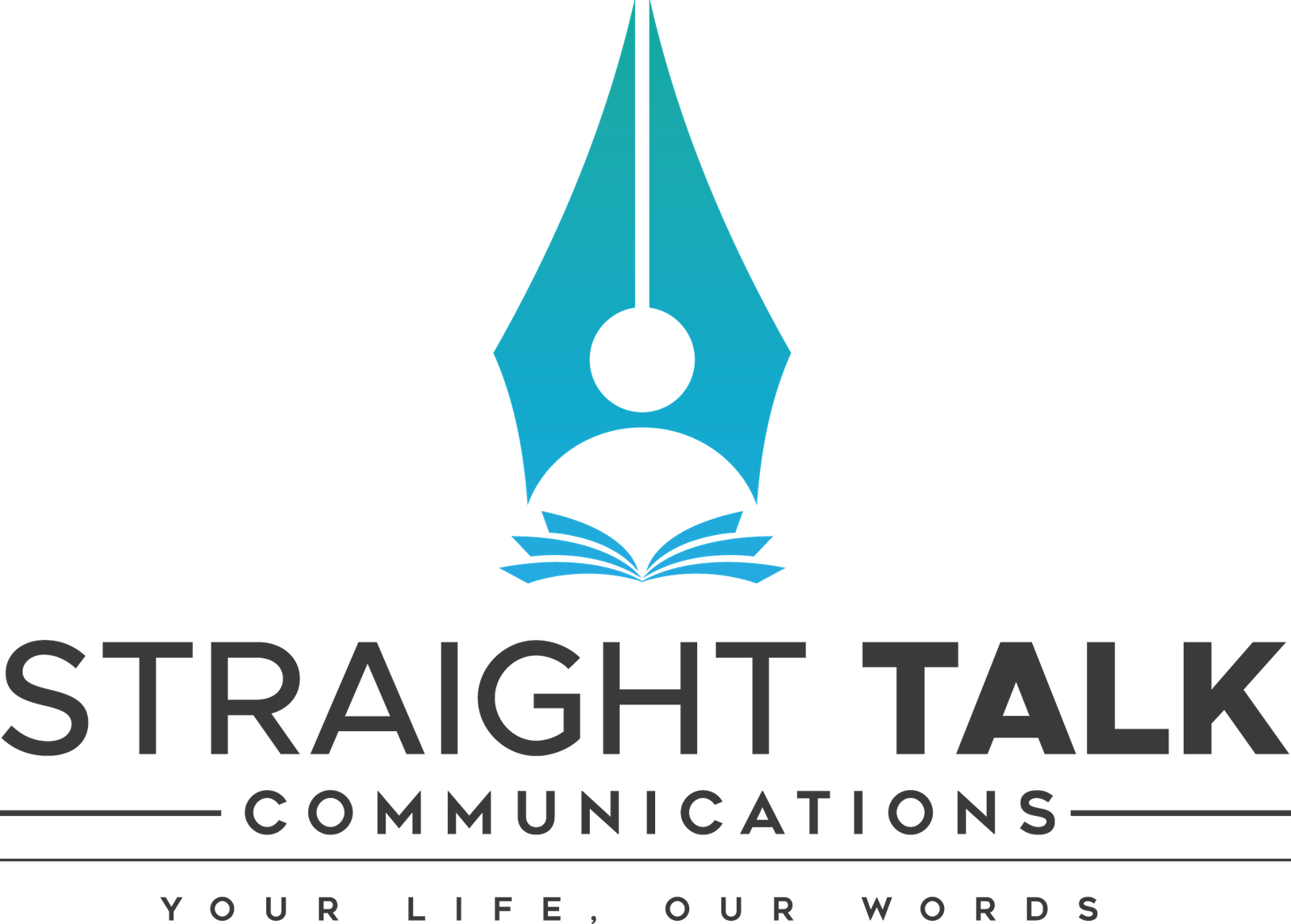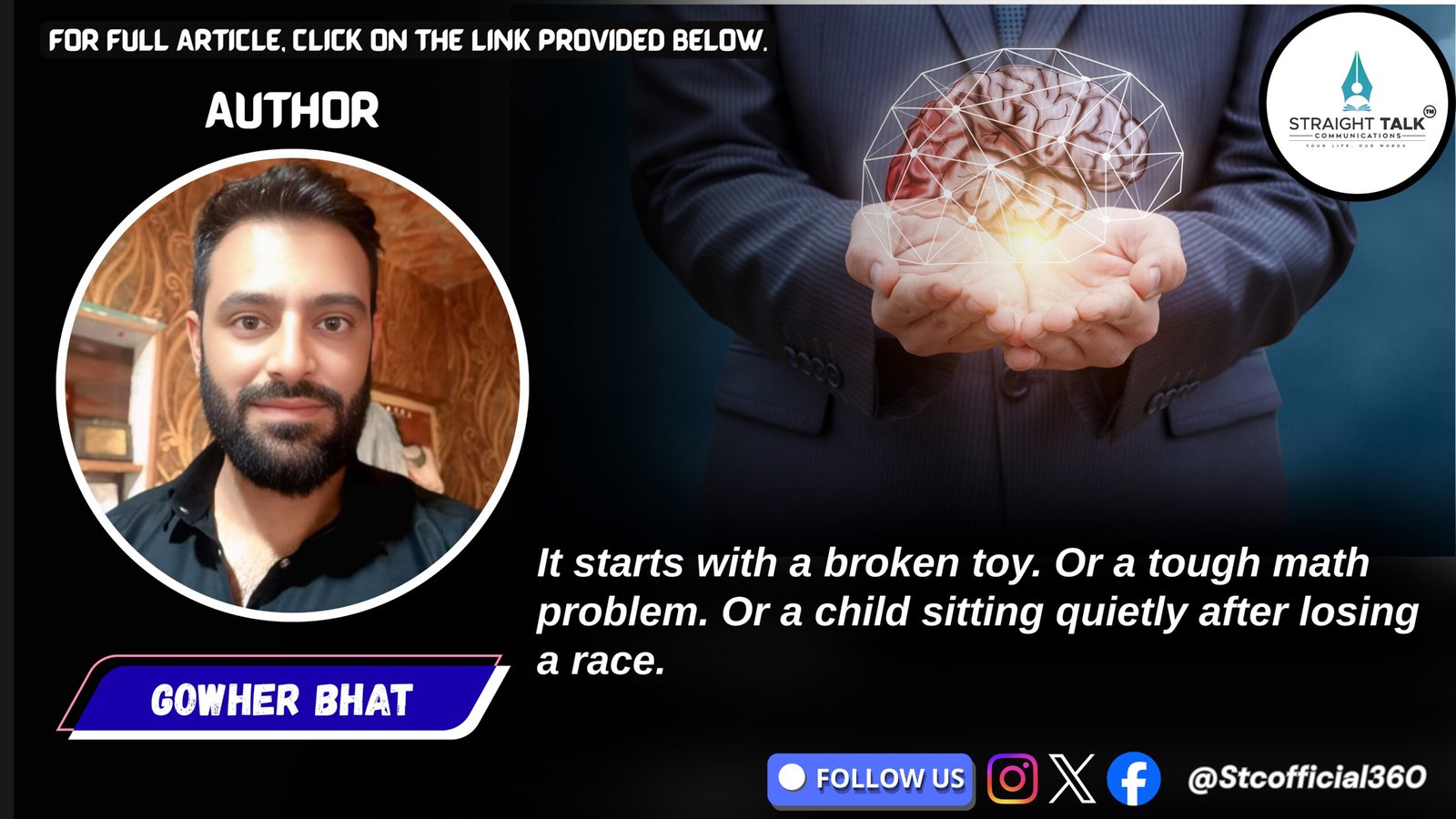AI Revolution in Education, Teachers at cross roads

The classrooms of tomorrow will not be defined by machines, but by the harmony between human insight and artificial intelligence.
Mohammad Hanief
Artificial Intelligence is transforming education at an extraordinary pace, redefining both how students learn and how teachers teach. Once confined to futuristic imagination, AI is now a reality within classrooms, capable of diagnosing learning gaps, generating tailored lesson plans, and assisting teachers with real-time insights.
The greatest promise of AI lies in its ability to personalise learning. Advanced systems can identify precisely what a student understands and where they struggle, adjusting lessons to their strengths, weaknesses, and pace. This data-driven adaptability allows each learner to progress according to their own rhythm. It also provides a path for addressing learning loss — an enduring problem in conventional classrooms where teachers must manage large, diverse groups and “teach to the middle.”
Traditional models of education have long struggled to accommodate differences in student ability and learning style. In a classroom of thirty students, no two learn alike. The pandemic magnified this inequality, widening gaps between students from privileged and under-resourced schools. Despite extensive investment in remedial programs, many children still fall behind. AI, by contrast, can respond instantly to individual needs, creating a learning experience that is both flexible and inclusive.
Far from replacing teachers, AI strengthens their role by taking over repetitive administrative and analytical work. Freed from these burdens, teachers gain more time to engage meaningfully with their students — understanding what motivates them, what obstacles they face, and how to nurture their curiosity. In this sense, technology enhances the human side of education rather than diminishing it.
There is, however, a misconception that AI might one day render teachers obsolete. The reality is quite the opposite. Machines can deliver content efficiently, but they cannot replicate empathy, ethical reasoning, or the emotional intelligence that defines human connection. Education is not merely the transfer of information; it is an act of inspiration. Teachers bring warmth, encouragement, and perspective — qualities that no algorithm can reproduce.
The evolving classroom is now a blend of human insight and technological precision. Teachers use AI-generated data to refine their methods and to design learning experiences that connect academic concepts with real-world interests. Mathematics can be explored through cooking or sports statistics, while geometry can come alive through practical design projects. By linking lessons to personal interests, students rediscover their potential and transform perceived weaknesses into strengths.
The integration of AI also encourages a shift in pedagogy. Instead of relying on rote learning, teachers are beginning to focus on inquiry-based approaches that emphasise critical thinking and creativity. With continuous feedback available through AI systems, instruction becomes more adaptive and student-centred. Struggling learners receive timely support, while advanced students are provided with enrichment activities that challenge them further. Assessment, too, evolves — moving away from one-time examinations toward continuous evaluation based on growth and comprehension.
In this new environment, the teacher’s role expands beyond traditional instruction. They are no longer just conveyors of information but designers of learning experiences and interpreters of data. Their task is to integrate technological tools with pedagogical wisdom, ensuring that digital systems serve educational goals rather than dictate them. AI can suggest pathways, but teachers remain the guiding force who decide how those insights should shape classroom strategies.
However, as with any technological shift, challenges abound. Concerns about over-reliance on AI, the potential for superficial learning, and issues of academic honesty remain valid. Many educators and parents worry that technology might discourage deep understanding or diminish students’ ability to think independently. Such fears highlight the importance of clear boundaries, ethical frameworks, and responsible implementation.
Successful integration of AI in education depends on collaboration among teachers, parents, and students. It requires training for educators to use AI effectively and to discern when technology may hinder rather than help. It also demands equitable access so that every student benefits, not only those in technologically advanced schools. When implemented with care and vision, AI becomes a tool for empowerment rather than exclusion.
My own experience of more than a decade in AI-assisted education has shown how transformative these tools can be when combined with strong mentorship. Students become more engaged when they see learning connected to their interests. Technology provides instant feedback, while teachers help translate that feedback into personal growth. This partnership builds confidence and fosters independent thinking — qualities that define lifelong learners.
The role of the teacher, therefore, is evolving into one of mentorship and guidance. As technology takes over routine tasks, educators can focus on fostering emotional intelligence, ethical awareness, and collaboration — skills that are essential for success in an unpredictable future. They are also becoming designers of sustainable education, integrating themes such as environmental responsibility and social awareness into their teaching. These expanded roles reflect the growing need for educators who can balance technical fluency with human sensitivity.
In the classrooms of the future, teachers will need to be as comfortable with digital tools as they are with traditional pedagogy. They will curate resources, interpret learning analytics, and adapt teaching methods to individual learners. The best educators will be those who can blend the efficiency of technology with the empathy of human understanding.
Despite the speed of change, one principle remains constant: the centrality of the teacher-student relationship. Technology can personalise instruction, but it cannot replace the trust, encouragement, and inspiration that flow from genuine human interaction. The best outcomes arise when AI and teachers work together — one providing precision, the other providing purpose.
As AI continues to evolve, education must evolve with it, but not at the cost of its humanity. The challenge is to build a system where technology enhances learning without overshadowing the teacher’s role. When used thoughtfully, AI can democratise education, bringing personalised learning to every student, regardless of background or ability.
We are standing at the threshold of a new era in education — one that blends human wisdom with technological innovation. Teachers are no longer confined to the role of information providers; they are architects of holistic learning experiences that shape students into curious, compassionate, and capable individuals.
In this emerging landscape, technology and humanity must coexist, each strengthening the other. AI can illuminate pathways, but it is the teacher who helps students walk them with confidence, imagination, and purpose. The classrooms of tomorrow will not be defined by machines, but by the harmony between human insight and artificial intelligence — a partnership that promises to make learning more engaging, inclusive, and transformative than ever before.







